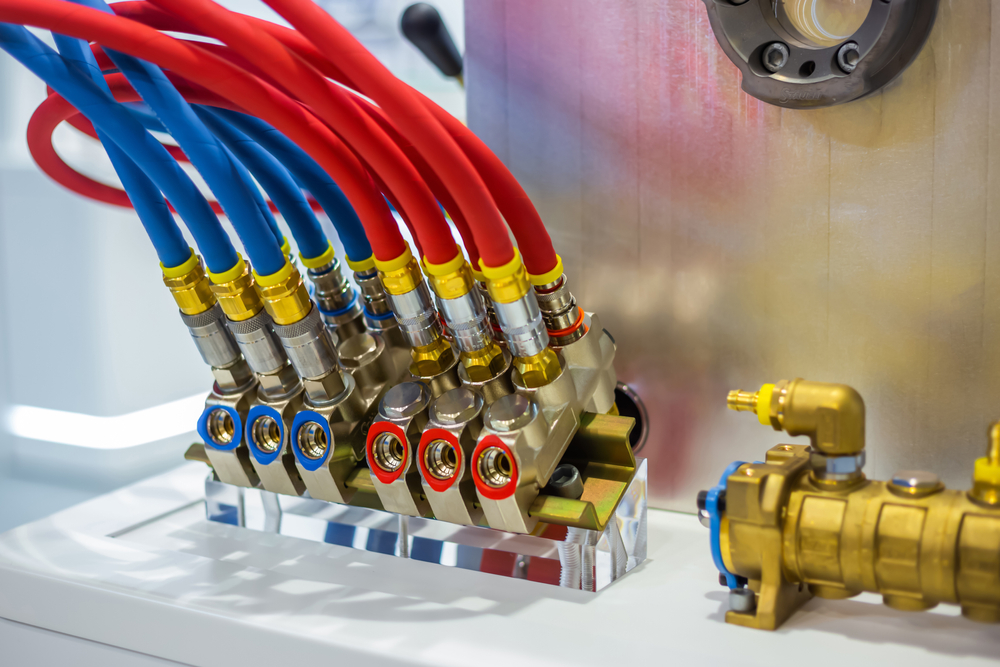
Can Hydraulic Hoses Handle Extreme Temperatures?
Hydraulic hoses play a critical role in transmitting hydraulic energy across systems that power a variety of machines, from construction equipment to industrial machinery. These hoses must maintain their integrity in challenging environments, where temperatures can fluctuate drastically. One of the most important aspects of hydraulic hose performance is its ability to withstand extreme temperatures. Whether in sub-zero environments or in high-heat conditions, hydraulic hoses must be designed to handle these stressors. In this blog, we’ll explore how hydraulic hoses handle extreme temperatures, the factors that influence their performance, and how to choose the right hydraulic hose for these demanding conditions.
The Hydraulic Hose Temperature Range: Understanding the Limits
When it comes to selecting hydraulic hoses, one of the first things to consider is the hydraulic hose temperature range. Every hydraulic hose is designed to operate within a certain temperature range, and exceeding these limits can cause the hose to fail prematurely. In general, most hydraulic hoses are designed to handle temperatures between -40°C (-40°F) and 100°C (212°F). However, this range can vary depending on the materials used to construct the hose and the specific type of hydraulic fluid that the hose is designed to carry. For instance, hoses made with synthetic rubber or thermoplastic materials may have a different temperature tolerance than those made from steel braided or braided composite materials.
The temperature tolerance of a hydraulic hose is often categorized into two main ranges: low and high temperatures. At low temperatures, hydraulic hoses can become brittle, especially when exposed to freezing conditions. The materials used to make the hose can contract, leading to cracks or splits in the hose, which could cause hydraulic fluid leaks. On the other hand, at high temperatures, hydraulic hoses may soften or degrade. This can lead to hose expansion, material breakdown, and loss of pressure within the hydraulic system, all of which can result in equipment failure.
Some industries, such as mining, agriculture, and aerospace, require hydraulic hoses that can handle extreme temperatures outside the typical range. For these applications, manufacturers design hydraulic hoses with special reinforcements and materials that allow them to perform reliably in both low and high temperatures.
Factors That Influence Hydraulic Hose Performance in Extreme Temperatures
Several factors determine how well a hydraulic hose performs in extreme temperatures. The materials used to construct the hose, the type of hydraulic fluid, and the operating pressure all play significant roles in determining the hose’s ability to withstand temperature fluctuations. The compatibility of the hydraulic hose with the fluid it carries is crucial, as certain fluids become more viscous at low temperatures or may degrade the hose material at high temperatures.
For high-temperature applications, hydraulic hoses are typically constructed with heat-resistant materials such as fluoropolymer, silicone, or special rubber compounds that can endure extreme heat without losing their flexibility. These materials are often enhanced with external layers of insulation to further protect the hose from the surrounding temperature.
In low-temperature conditions, the material of the hydraulic hose needs to maintain its flexibility without becoming brittle. Hoses designed for cold environments are often made from flexible synthetic rubber or thermoplastic materials, which allow them to retain their elasticity even in freezing conditions. These materials also prevent the hose from cracking under the stress of hydraulic pressure in extreme cold.
The pressure within the hydraulic system is another crucial factor when considering temperature extremes. High-pressure systems generate more heat, which can exacerbate temperature issues and put additional stress on the hose. For this reason, hoses used in high-pressure systems must be designed to handle the added thermal load, especially in industries where equipment operates continuously at elevated pressures and temperatures.
Hydraulic Hoses for Extreme Temperatures: Tailoring Solutions for Specific Needs
For industries that regularly deal with extreme temperatures, it’s essential to select hydraulic hoses that are specifically designed for these conditions. There are hydraulic hoses available that are engineered to handle both extreme hot and cold temperatures. These hoses are typically built with advanced materials and are often custom-made to meet the specific needs of the application.
In extremely hot environments, such as those found in industrial manufacturing plants, steel mills, or power plants, hydraulic hoses must be capable of enduring temperatures well beyond the typical 100°C mark. High-temperature hydraulic hoses are made from materials like braided steel, fluoropolymer, or special heat-resistant synthetic rubber compounds. These materials prevent the hose from softening or cracking at high temperatures, ensuring long-lasting performance. In addition, these hoses are often covered with heat shields or insulation to protect the internal structure from excessive heat.
Conversely, in extremely cold environments, such as those found in the oil and gas industry in the Arctic or in cold storage facilities, hoses must be able to withstand freezing conditions without becoming brittle. Hydraulic hoses for low temperatures are made from materials designed to remain flexible and durable in freezing conditions. Special coatings and reinforcements are used to prevent the hose from cracking, allowing it to maintain its structural integrity even in the harshest cold environments. For some applications, manufacturers may use heated hoses or jackets to ensure that the hydraulic fluid within the hose maintains the necessary viscosity for optimal performance.
For industries operating in areas where temperatures fluctuate rapidly, such as in aerospace or military applications, hydraulic hoses must be designed to endure sudden changes in temperature without affecting performance. In these cases, manufacturers often provide hoses that can handle both high and low extremes, ensuring that they can handle the pressure and temperature variations without fail.
Maintenance Tips for Hydraulic Hoses in Extreme Temperatures
To ensure the longevity and efficiency of hydraulic hoses operating in extreme temperatures, regular maintenance is essential. The harsh conditions can put extra strain on hoses, so routine checks for wear and tear are crucial to prevent sudden hose failures. The first step in maintenance is to inspect hoses regularly for any visible signs of damage, such as cracks, abrasions, or signs of heat degradation. For hoses exposed to extreme heat, check for any softening or bubbling in the hose material, which could indicate excessive heat exposure.
If a hydraulic hose is subjected to extreme cold, check for stiffness or cracking when bending the hose. A hose that appears to be brittle may need to be replaced before it fails. For high-pressure systems, it’s also important to check for any loss of pressure, which can indicate leaks caused by hose damage. Ensure that the hydraulic system is properly insulated, as this can help maintain a consistent temperature and reduce the strain on the hoses.
In addition to regular visual inspections, ensure that the hydraulic system is using the appropriate type of hydraulic fluid for the temperature conditions. Certain hydraulic fluids are designed to perform better in extreme temperatures, so be sure to select fluids that are optimized for both high and low-temperature environments. Using the wrong fluid can exacerbate the problems associated with temperature extremes and cause premature wear on hydraulic hoses.
Lastly, ensure that the hydraulic hoses are stored properly when not in use. For hoses used in cold environments, store them in a warm area to prevent freezing and cracking when they are put back into service. Similarly, hoses exposed to high temperatures should be stored in a cool, dry area to avoid additional heat exposure.
The Importance of Choosing the Right Hydraulic Hose for Extreme Temperatures
Hydraulic hoses are essential components in various industries, and their ability to handle extreme temperatures is crucial for ensuring the reliability and efficiency of the hydraulic system. Whether in high heat or freezing cold, the right hydraulic hose can make all the difference in maintaining a functional and safe system. The hydraulic hose temperature range is an important consideration when selecting the right hose for the job, and it’s essential to take into account the specific needs of the application, the type of fluid being used, and the operating pressures involved.
With the right material selection and maintenance practices, hydraulic hoses can handle even the most extreme temperature conditions, providing reliable performance and extending the lifespan of the system. By understanding the limitations and capabilities of hydraulic hoses, industries can ensure they choose the correct hydraulic hoses for extreme temperatures and keep their systems operating smoothly in challenging conditions.
Royal Brass Incorporated
Welcome Royal Brass Incorporated! We are your 3rd generation, family-owned, local hose supplier! Our family has dedicated our services to supplying northern California with all types of hoses, fittings, flanges, regulators, valves, adapters, and gauges. We pride ourselves on having the most extensive inventory in northern California. Our inventory ensures that we can fix most products on site, the same day. Here at Royal Brass Incorporated, we only hire qualified individuals who are trained in factory sales. Our fully stocked warehouses ensure that we can fill your hydraulic and pneumatic hose, tubing, and fitting needs on time, every time. High-quality customer service is our goal and has been since 1952. Stop by or contact us today!
Categorised in: Hydraulic Hose





